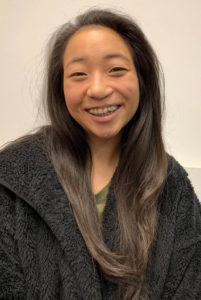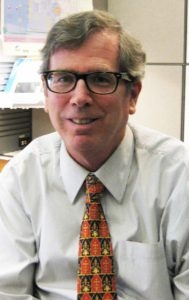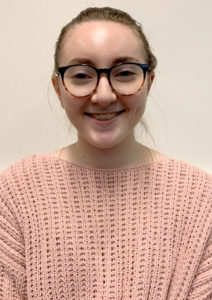College students without disabilities are not cognizant enough of the different needs of neurodiverse students. The commonality concept of neurodiversity, of students with Autism Spectrum Disorder (ASD) being deserving of equal opportunity (Silberman, 2015), is not evident frequently with students without disabilities. College students without disabilities can be advocates however for neurodiversity in empowering students with disabilities in an engaging neurodiversity program.

Brittany Schneider

James Lawler

Elizabeth Byington
Introduction
Pace University in New York City is engaging in an Area of Knowledge (AOK) community computer information systems (CIS) outreach program with the AHRC New York City Middle / High School (M/HS) in Brooklyn, New York, where Pace students are mentoring M/HS students with ASD.
The focus of the program is to involve the M/HS students with the undergraduate students on mostly personalized projects of virtual reality (Furler, 2018) sites on the Web, proposed by the M/HS special education teachers.
The foundation for the program comes “from person-centered planning principles (Holburn, Gordon, & Vietze, 2007) on other projects initiated since 2009 with the M/HS,” comments Professor James Lawler, coordinator of the program at the university.
The goals of the program are to involve freshman to senior undergraduate students in learning about the humanity (Prizant, 2015) interests of the M/HS students, and to involve the M/HS students in learning about the humanity interests of mostly peer undergraduate students, one-on-one on the premises of a major metropolitan university, so that the undergraduate students are learning about neurodiversity (Baron-Cohen, 2019) in outreaching to the M/HS students.
For the undergraduate students, they are learning neurodiversity in practicing recognition and respect (Baron-Cohen, 2019) of not only M/HS students with ASD, but also other undergraduate students with ASD, most of whom they do not meet often in the university.
Projects
The essence of the projects are geographic journeys on the Web forming from extensive interactions in learning the interests of the M/HS students, and from the interactions the undergraduate students are formulating the journeys on new personalized sites on the Web.
For example, the journeys are highlighting Asia, including China and Peking and Japan and Tokyo; Europe, including England and Italy; and the United States, including Boston, Massachusetts, Miami, Chicago, Los Angeles and San Francisco, California, for the M/HS students. The journeys to the locales are integrating museums, notable personalities, restaurants, recreations, and sports sites, and further integrating navigational options of transportation virtual tours. The journeys are informed by the interests of the M/HS students that are meaningful to them, apart from the special education teachers and the undergraduate students, such that they are being mostly researched by the M/HS students.
“The products of almost all of the projects, the journeys on the Web sites, are more innovative and more powerful in presentations of the results from both of the students – neuroatypical and neurotypical – involved on the projects than if the projects were only the results of the skills of one of the students,” comments Professor Lawler.
The projects are being implemented annually in formal 12 2-hour sessions on Tuesdays and in informal 6 2-hour sessions on Fridays, in both fall and spring semesters of the university. The sessions on Tuesdays are involving 24 M/HS students paired with 24 undergraduate students, and the sessions on Fridays are involving an additional 8 M/HS students partnered with an additional 8 students of the university. The parents of the M/HS students are interfacing with the M/HS on involving the selection of students to be at the university. At the end of the semesters, the M/HS students are presenting their projects to their parents and to the M/HS staff and teachers in the auditorium of the university, and in fact, most of the M/HS students are presenting proudly their sites on the Web without the help of the undergraduate students. The privatized sites are being retained for the M/HS students by the M/HS after the presentations. The projects are being implemented in simplified tools, such as Google Maps, iMovie and Movie Maker, and Wix and WordPress, as in prior years.
These journeys of the M/HS students with ASD are essentially “I am finally here” sites on the Web being implemented by the students of Pace University, who are learning more of neurodiversity now in interpreting the interests and the skills (Baron-Cohen, 2019) of the M/HS students, most of whom they would not likely meet if they were not in this program.
Impact of Program
The impact of the program is being indicated in the reflections of the undergraduate students, in that they are indicating the importance of neurodiversity (“neuro-complex” and “neuro-unique” personalities (Muzular, 2018)), not having experienced interactions previously with such a frequently neglected segment of society.
“My experiences in the program have improved my perceptions of students with ASD, as I had no interactions with those with ASD until the program. I had stereotypes of them that were unfounded until the program. I learned a lot about them by talking to them when we were working on the projects with them,” comments Elizabeth Byington, a program student at the university.
From the increased experiences and the increased research of these students from resources such as Disability Scoop, they are learning that students with ASD have interests and skills like them and are normal (“nothing about us without us” (Catapano, & Garland-Thomson, 2019)), and learning of the possibilities of those with ASD by undergraduate students is powerful in the setting of a university (Schwarz, 2006).
“The program is eye-opening in improving my perspective on the motivations and the skills of students with ASD. I have immense respect for the strengths of my M/HS student to be able to creatively work with me on the projects. I have been impressed the most that the disabilities of my M/HS student were not inhibiting his skills in working with me,” comments Brittany Schneider, another program student at the university.
Importantly, the undergraduate students, most of whom had not met those with ASD until the program, are reflecting interests to be advocates for those with ASD – interests that were not indicated until the program – with disability movement organizations, such as Autism Speaks, and sponsorships, such as Advocacy Fairs and Disability Film Festivals at the university.
Finally, the impact of the program is being indicated in the reflections of most of the M/HS students, as they are learning neurodiversity “not only in imaginative journeying possibilities on the projects, in partnering [with the undergraduate students], but also in improved self-advocacy and self-esteem skills,” says Estefania Flores, Transitional Coordinator of the M/HS.
Most of the M/HS students in the program join new projects with new undergraduate students in subsequent semesters of the university.
The impacts of the program in the reflections of the M/HS students and the students of the university are narratives of positive results (Kroeger, & Kraus, 2017).
Conclusion
College students can be contributors to the field of neurodiversity. Engaging disability organizations can form a flexible foundation for involving other students with and without disabilities in initiatives of neurodiversity (Kroeger, Kraus, 2017) (“neurodiversity is good when it brings people together” (Muzular, 2018)), as in this program. The model of this neurodiversity program at Pace University, with the AHRC New York City Middle / High School, is definitely an opportunity to be pursued by other non-profit organizations and universities.
Elizabeth Byington is a junior undergraduate student majoring in psychology in the Dyson College of Arts & Sciences, Pace University; James Lawler, DPS, is Professor of Disability Studies and Information Technologies, Seidenberg School of Computer Science and Information Systems, Pace University; and Brittany Schneider is a senior undergraduate student majoring in arts & entertainment management in the Lubin School of Business, Pace University.
For more information about the college neurodiversity program as practiced at Pace University, please contact Dr. Lawler at jlawler@pace.edu.
References
Baron-Cohen, S. (2019). The concept of neurodiversity is dividing the autism community. Scientific American, April 30, 1-8.
Catapano, P., & Garland-Thomson, R. (2019). About Us: Essays from the Disability Series of the New York Times. New York, New York: The New York Times Company.
Furler, B.W. (2018). The importance of virtual reality for people with disabilities. AR/VR Journey Magazine, August 24, 1-5.
Holburn, S., Gordon, A., & Vietze, P.M. (2007). Person-Centered Planning Made Easy: The PICTURE Method. Baltimore, Maryland: Paul H. Brookes Publishing Company.
Kroeger, S., & Kraus, A. (2017). Thinking and practicing differently: Changing the narrative around disability on college campuses. In E. Kim and K.C. Acquino (Ed.), Disability as Diversity in Higher Education: Policies and Practices to Enhance Student Success, New York, New York: Routledge, 216-229.
Muzular, D. (2018). Neurodiversity: A person, a perspective, a movement? The Art of Autism, September 11, 1-6.
Prizant, B.M. (2015). Uniquely Human: A Different Way of Seeing Autism. New York, New York: Simon & Schuster.
Schley, S. (2019). Easy to implement strategies for disabilities in the college classroom. Faculty Focus, November 4, 1-6.
Schwarz, P. (2006). From Disability to Possibility: The Power of Inclusive Classrooms. Portsmouth, New Hampshire: Heinemann.
Silberman, S. (2015). NeuroTribes: The Legacy of Autism and the Future of Neurodiversity. New York, New York: Penguin Random House LLC.





